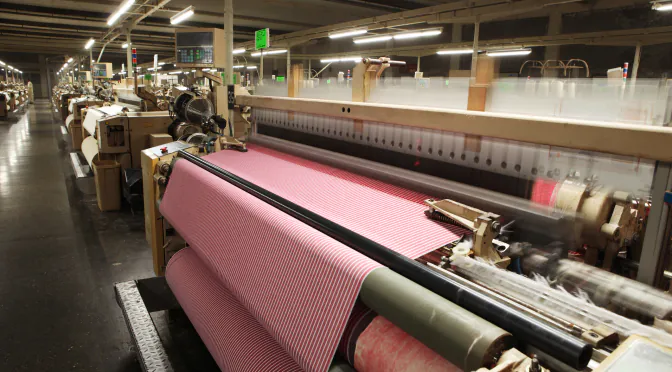From durable cotton to splendid silks– fabric not only protects us from the natural elements, but also represents our sense of style and fashion. However, traditional definitions and perceptions regarding fabric are changing in the form of wearable technology, which in turn is encouraging the development of Smart Textiles.
Putting the smart textiles to the ultimate test
Taking wearable technology to a whole new level, smart textiles are known to enhance the overall functionality of the apparel by integrating electronic components into the fabric. What makes smart fabric technology revolutionary is its ability to communicate, transform, and even grow!
 ‘Smartness’ amid fabrics initially emerged in the form of passive smart textiles, which could sense and react to only environmental conditions. Today, we also have active smart textiles and ultra-smart textiles. The ultra-smart textiles have units that work similar to a human brain, with reasoning, cognition, and activating capabilities.
‘Smartness’ amid fabrics initially emerged in the form of passive smart textiles, which could sense and react to only environmental conditions. Today, we also have active smart textiles and ultra-smart textiles. The ultra-smart textiles have units that work similar to a human brain, with reasoning, cognition, and activating capabilities.
One excellent example of smart textiles is Project Jacquard, developed as a collaboration between Levi’s and Google. Designers and developers came together to create complex, networked, and touch-sensitive textile products. Sophisticated weaving technology has been used to convert ordinary clothing and interior design fabrics into interactive facades. The Trucker Jacket designed by this team looks and feels like any regular denim jacket. What makes it ‘smart’ is the fact that it lets the wearer:
- Receive texts and calls without using the handheld device
- Play music
- Navigate, without having to look at the screen
Smart textiles also offer an aesthetic effect, as well as facilitate enhanced performance. As these fabrics can easily adjust to body temperature and muscle movement, they have been adopted in sports and warfare as well. Not surprisingly, smart fabric technology is one of the most intelligent manufacturing technologies in the textile industry.
Read: How marine composites can turn textiles smart?
Is the marriage between fashion and technology the future of the textile industry?
“Clothing can be considered a second skin and by implementing technology in it, you are bringing it into your intimate space.”– Nicky Assmann, influential e-textile designer.
Smart fabric technology has evolved immensely over the past fifteen years. At present, high production costs and incompatibility of manufacturing practices are some of the major impediments for smart textile vendors. However, this doesn’t mean that there is no scope for a bright future. Particularly, in healthcare, sports, and warfare, smart textiles are poised to be serious game changers.
According to our industry experts, smart garments is the fastest-growing and largest individual category in the wearable technology market. With fashion designers like Iris Van Herpen adopting smart technology in their fabrics for aesthetic and functional purposes, it is only a matter of time that many more will follow suit and create a fabric segment specifically dedicated to smart textiles.
Summarily, with the market’s inclination towards all things smart, it was just a matter of time before digitalization and IoT found a way to integrate with the things we wore. Especially, for a rapidly influential demographic like the millennials, smart textiles pose an option that is right in line with their core expectations and lifestyle choices. Plus, in a segment where innovation has been stagnant for years, ‘smartness’ could just prove to be the ultimate difference maker.



